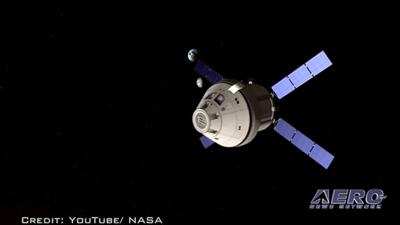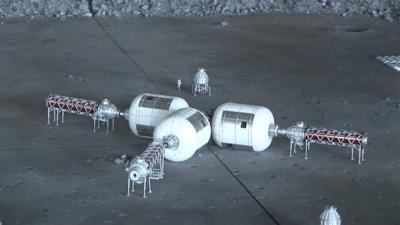Sat, May 06, 2017
Delivers An Alternative To Current Environmental Control And Life Support Systems As Space Missions Evolve
A teaming agreement has been announced between Honeywell and Paragon Space Development Corporation that could potentially change the way astronauts experience life in space. The two companies will design, build, test and apply environmental control and life support systems for future human NASA and commercial programs.

Longer duration, human-exploration missions are planned for the future, but there is no easy way to replenish resources such as oxygen and water in space. NASA's future human-exploration missions will require an integrated and highly efficient system for life support and thermal control. Paragon's focus on evolving water and thermal technologies complements Honeywell's new developments in air revitalization technologies, both of which are essential parts of the spacecraft needed for NASA's deep space goals.
"A renewed interest in developing a Deep Space Habitat needed for reaching the Moon and Mars, continued experimentation aboard the International Space Station, and a desire to push the limits of unmanned flights make this a remarkable time in space exploration. Unmanned achievements are now giving way to long-distance and long-duration human missions. The technology developed by Honeywell and Paragon will give humans the opportunity to explore space for longer periods than before," said Marty Sheber, vice president, Space, Honeywell Aerospace. "Honeywell has a long legacy of providing mission-critical environmental control and life support systems (ECLSS), including being the provider of critical parts of the system currently used on the International Space Station. That heritage, coupled with Paragon's focus on innovative and emerging ECLSS technologies, provides a complementary team to develop technology capable of supporting humans on their longer explorations into space."

"This agreement allows the Honeywell and Paragon team to provide fully integrated solutions to NASA, combining our strengths of experience and innovation in technology with an agile and customer-focused responsiveness," said Grant Anderson, president and CEO, Paragon Space Development Corporation. "Potential prime contractors and NASA will have access to a system-focused integration team with a catalog of proven and emerging technology to bring long-duration exploration of the Moon and Mars to practical implementation."
(Source: Honeywell news release. Images from file)
More News
Aero Linx: International Federation of Airworthiness (IFA) We aim to be the most internationally respected independent authority on the subject of Airworthiness. IFA uniquely combi>[...]
Ultrahigh Frequency (UHF) The frequency band between 300 and 3,000 MHz. The bank of radio frequencies used for military air/ground voice communications. In some instances this may >[...]
A Few Questions AND Answers To Help You Get MORE Out of ANN! 1) I forgot my password. How do I find it? 1) Easy... click here and give us your e-mail address--we'll send it to you >[...]
From 2019 (YouTube Edition): Learning To Paint Without Getting Any On Your Hands PPG's Aerospace Coatings Academy is a tool designed to teach everything one needs to know about all>[...]
Also: Sustainable Aircraft Test Put Aside, More Falcon 9 Ops, Wyoming ANG Rescue, Oreo Cookie Into Orbit Joby Aviation has reason to celebrate, recently completing its first full t>[...]
 ANN's Daily Aero-Linx (05.06.25)
ANN's Daily Aero-Linx (05.06.25) ANN's Daily Aero-Term (05.06.25): Ultrahigh Frequency (UHF)
ANN's Daily Aero-Term (05.06.25): Ultrahigh Frequency (UHF) ANN FAQ: Q&A 101
ANN FAQ: Q&A 101 Classic Aero-TV: Virtual Reality Painting--PPG Leverages Technology for Training
Classic Aero-TV: Virtual Reality Painting--PPG Leverages Technology for Training Airborne 05.02.25: Joby Crewed Milestone, Diamond Club, Canadian Pilot Insurance
Airborne 05.02.25: Joby Crewed Milestone, Diamond Club, Canadian Pilot Insurance




